Have you ever considered using a tire with an exposed cord? If the answer is yes then let us stop you right there, we understand that it can be quite a drag and too stressful whenever you come across this problem but if you try to ignore it, you could put a lot more at stake.
It is certainly obvious enough that we ought to change our tires whenever we see cords showing out from the tread.
This is indeed a call for disaster and we should not consider driving it not even for a second.
What's In This Guide?
Knowing the types of cords should give you a hint on how important it is to use a proper tire. Cords or anything that are showing from the tread or the sidewall of your tire is a risk that should never be taken, whether it is a wet road or not.
Tire cords can be categorized into 3 parts. The carcass ply, the casing ply, and the cap ply. Each cord has a different way of maintaining the tires’ strength. But all in all, they have one common goal and that is to keep the tire from wearing down quickly.
Carcass PlyCarcass ply is a thin textile cord that is attached to the rubber that maintains a firm hold for texture and support. Basically, it consists of thin textile fibers that are bonded into the rubber. It resists pressure and amplifies and determines the strength of the tire.
Casing PlyThis is where the entire tire depends in terms of strength. Casing ply is made up of a bunch of tiny metal cords that give solid firm and durability to the tire. It is also responsible for protecting the tire from cuts and provides durability to withstand highspeed pressure.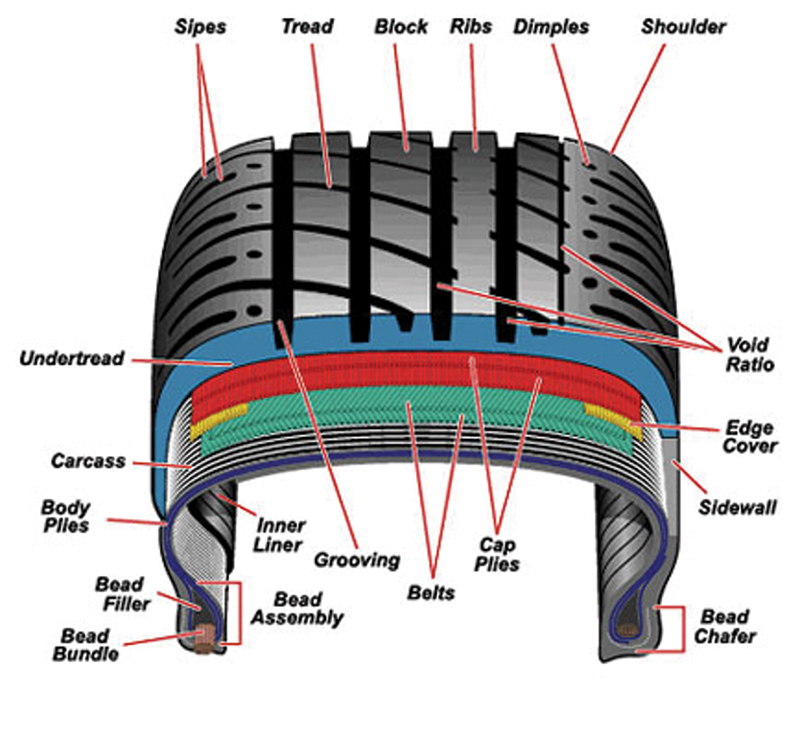 It also helps the tire from tearing up due to high temperature and rough terrains.
It also helps the tire from tearing up due to high temperature and rough terrains.
A part of the tire is made of rubber converse reinforced nylon cords that keep the tire from deforming. It is also responsible for keeping the temperature optimal and prevents the tire from wearing down or aging. The primary dilemma for tires is high temperature. If tires are not supplied with materials that protect them from heating, it’s durability is reduced significantly.
Now that we have jotted down every component of cords there are inside a tire, we have fully explained that cords are mainly for durability and shape purposes only. It should be highly alarming to see an exposed cord in the tire when on the run. This defeats the purpose of keeping the tire durable and safe from any unwanted issues.
What Could Happen If I Use A Tire With an Exposed Cord?Several damages can be inflicted when you drive a vehicle using a tire with an exposed cord on it. It is surely highly discouraged to do, so to be more specific on what are the things that could happen, here is a list of some possible details that could take place when you use your tire with an exposed wire for driving.
It is surely highly discouraged to do, so to be more specific on what are the things that could happen, here is a list of some possible details that could take place when you use your tire with an exposed wire for driving.
Tires that show their cord from the inside are usually because of the bald tread. Over time, tires tread are being flattened due to the fact that friction, temperature, and terrain exhausts the tire treads and eventually exposes the cord inside. Imagine an eraser from a pencil, its surface then disappears as you keep on pressing it down on paper. That’s how tires are like when on the road.
If not checked well, the tire surface can eventually lead to the cord and it will compensate for the tension due to the absence of the tread. Since it’s mostly made of metal, it is unable to keep traction between the wheel and the road. Thus, the vehicle will lose control and may cause severe damage to the wheel, suspension, and will most certainly damage the tire even more.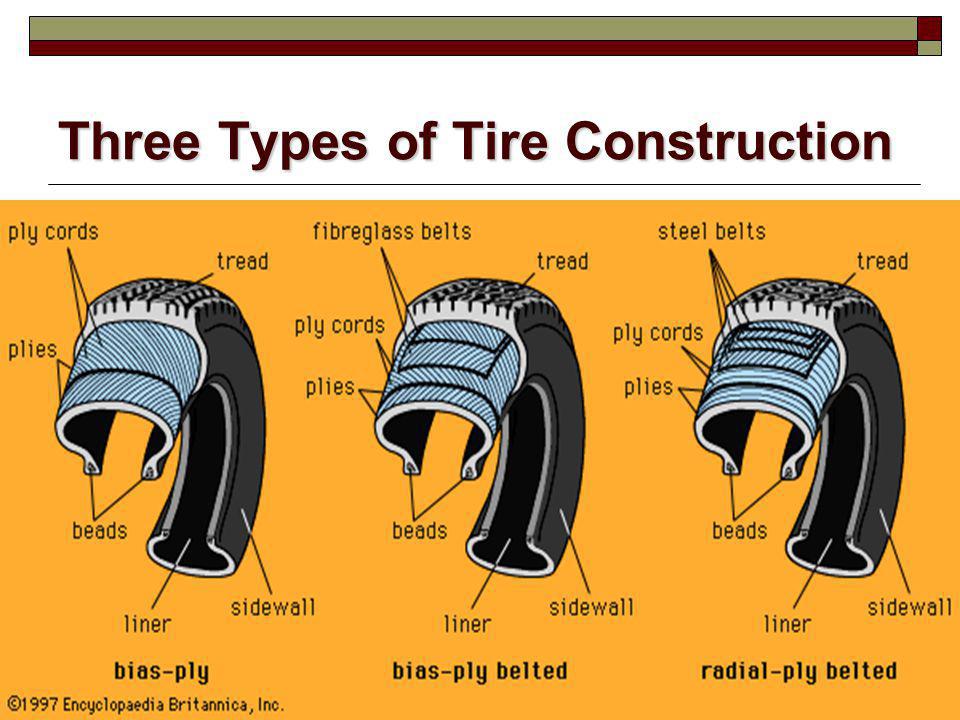
As mentioned above, cords have the main purpose of keeping the tire from deforming and maintain its durability over time. However, cords are unable to produce a grip for handling and steering. When a tire with an exposed cord is used, it could tear up the whole tire and blow it up.
Some cords are exposed from the sidewalls but it’s not an excuse for safe use. Regardless of where the cord is exposed, the tire is bound to blow up when used eventually and at a certain speed.
Accidents May OccurUsing a tire with an exposed cord will not only make the vehicle dysfunctional, but it could also lead to more danger such as road accidents. It only takes a matter of time for a tire with an exposed cord to blow up and the percentage of accidents will dramatically increase when used on public roads. It also can cause self-inflicting damages due to unreliable grip and handling.
A busted tire can catch you by surprise because the only hint you can get from it is its wobbly sound.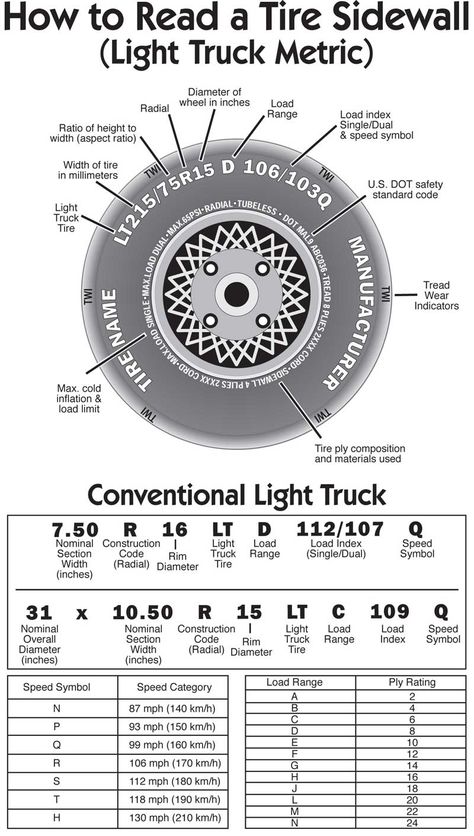 There are also cases that it does not make any noise at all, which makes it even more dangerous. You can not determine whether the tire will act up, may it be on a speedway or a slow drive. That is why using tires in these conditions attracts accidents and causes chaos on the road.
There are also cases that it does not make any noise at all, which makes it even more dangerous. You can not determine whether the tire will act up, may it be on a speedway or a slow drive. That is why using tires in these conditions attracts accidents and causes chaos on the road.
Tires with exposed cords are likely to release air pressure bit by bit causing the wheels to be unbalanced. Since we have established that tire cords are not able to withstand traction from the road, it could dent your rim and eventually damage it during the run. Due to this, the possibility of getting your suspension damaged also increases significantly.
Safety Measures for PreventionsYou can break down all the safety measures to prevent driving with a busted tire. By educating yourself and others on how to deal with the scenario, you can radically decrease the chances of road accidents due to faulty tires. Safety measures sure sound complicated but from a wider perspective, all the things that you should consider are quite simple. Here are some of those measures that you would want to take.:
Here are some of those measures that you would want to take.:
Yes, it sounds too common, but having this fundamental thinking will take you miles without having to worry about any possible defects. Making sure that you are bringing a working spare tire would give you convenience whenever your tire gets busted.
You would want to check your spare tire’s condition and air pressure every 2 to 3 weeks at the very least. This is to make sure that you are well prepared when a malfunction with your tire occurs.
Learn How To Change Your TireThis is surely another common piece of advice. Unfortunately, most drivers tend to forget the basics of changing spare tires. This is pretty much the most important thing you need to learn or re-learn. By being able to know each step, you can ensure that you have the skills to replace tires whenever you need to. Now is the best time to learn and re-learn things because the internet offers so many guides for things like this.
We have established that there is no other way to use a tire with an exposed cord than to dispose of it. No matter how many cans of aerosol sealant you use on this one, tires with exposed cords will not get a fix anymore. Keep in mind that sealants can repair small punctures but are not able to mend cuts from the sidewall and are not made to strengthen the cord.
Contact Expert Near YouIt is surely better to ask than to act as you know it. If you feel like you are not yet confident enough to initiate the things mentioned above, worry not because you can always consider contacting a tire expert near your area. That way, you can ensure that the issue can properly be fixed and you will be able to see how experts deal with it first hand. Not only will this give you convenience, but it will also help you gain knowledge the next time you experience trouble with your tire.
Destroy the Myth That It is Alright to Drive a Tire With An Exposed CordSome would say that you can still drive your vehicle in this state for a certain number of miles and certain miles per hour. It is not. You can never really tell when will a tire like this could blow up. Using a tire with an exposed cord is like gambling a losing fight. You would want to risk it but the chances of winning are less than zero percent.
It is not. You can never really tell when will a tire like this could blow up. Using a tire with an exposed cord is like gambling a losing fight. You would want to risk it but the chances of winning are less than zero percent.
Do not take risks in driving vehicles with tires that have exposed cords. This will not only put your vehicle into destruction, but you could also put your life and the lives of others at stake by trying to do so. Get your tires replaced, and consult a tire expert for an opinion.
Buying a Sub-Standard Quality Tire Will Cost You MoreIt is true that tires nowadays are not getting any cheaper. That is the reality that we are in right now. That is why we should take a look at our vehicle expenses as investments. Availing a good quality tire that provides longer durability may be pricey but it will most certainly last longer than tires that have sub-standard material.
Aside from price comparison of tires, sub-standard tires can also affect your driving performance, your vehicle condition, and your suspension.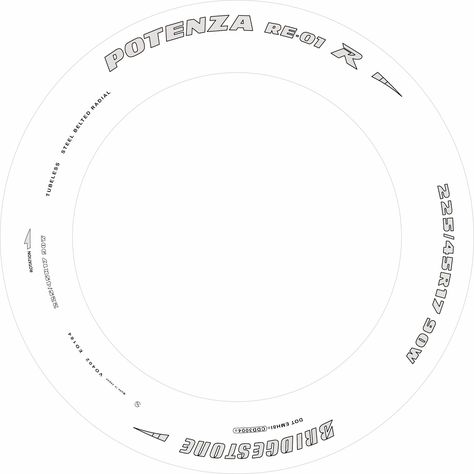 All in all, if you do not think about the wider view, it could cost you more than just a tire.
All in all, if you do not think about the wider view, it could cost you more than just a tire.
All in all, it is common knowledge for vehicle owners to not drive a vehicle using a tire with an exposed cord. You can ask how long it could last but really, no one can really determine. It will always depend on the situation, the road, the speed, and the circumstance.
We drivers should be responsible enough to educate ourselves and inform others on how crucial these things are. Driving using a busted tire is not and will never be a good option to go to. Hence, being able to prepare ourselves for future happenings will certainly negate this possibility of using bad tires from happening. Do not ever use busted tires for driving.
Asked
Modified 4 years, 8 months ago
Viewed 145k times
Yesterday I bumped into a curb and my tire has sidewall damage.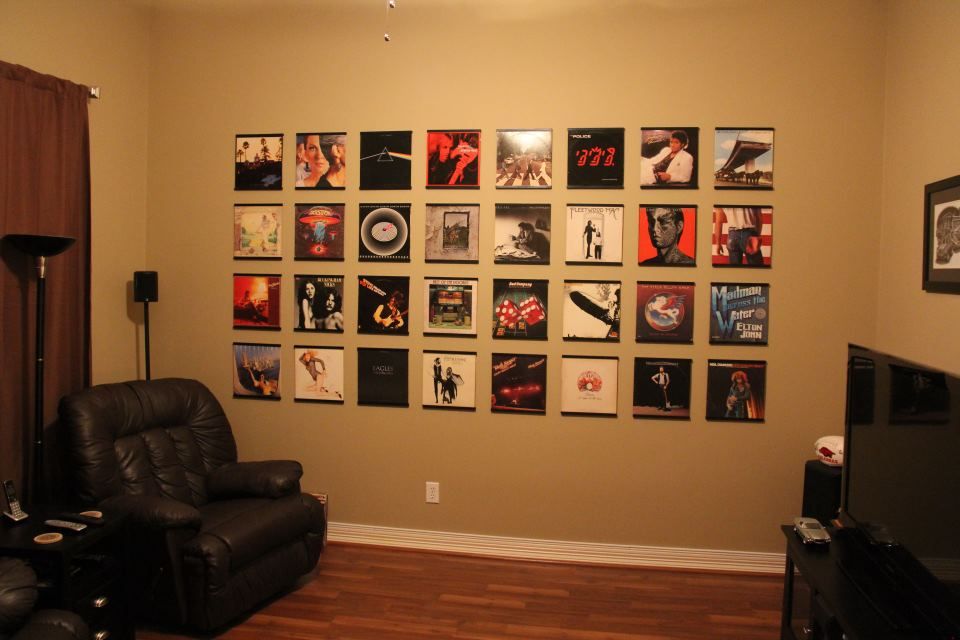 Is this tire safe to drive on? or do I need to replace this tire?
Is this tire safe to drive on? or do I need to replace this tire?
8
Replace for sure. The sidewall is the most vulnerable part of the tire. The tire might be holding air for now, and you might be able to drive on it for a while, but it could "pop" at any time creating a very dangerous situation.
Put the spare on immediately - don't risk a blow-out.
1
although JPhi is right in what he says, he's also slightly wrong.
If you have taken a chunk out of your sidewall it's not necessarily dangerous in the slightest, it only becomes dangerous when you can see the cords because that is what can cause the tyre to bulge and blow out.
it is worth checking for any bulging after a 100 miles or so but if it's a part of the Tyre isn't raised up slightly then you will be fine.
The rubber on the Tyre isn't what keeps it structurally sound, It's the cords inside that provide the strength/structural integrity to handle 30+ psi, the rubber is just to keep the air in.
Worked in a Tyre/wheel garage for over 10 years and always had people coming in with small gauges where the cords weren't showing and they never had an issue waiting for the Tyre to wear down before replacing it.
6
If it were me I would replace the tire. I've had a blowout in a sidewall before and it's no fun. The real question for me is how much I value my life, the lives of passengers, and those around me.
1
Same question, lots of answers.
https://www.reddit.com/r/Cartalk/comments/137i4f/my_tire_sidewall_is_ripped_can_i_drive_with_it/
Notice the one response which suggests sealing the cut to stop water damage.
However, the outer tire rubber doesn't hold the air, the inner liner holds the air in. Thus a tire puncture means the inner liner gets a hole, and the inner liner must be properly patched.
A tire sidewall slice is quite common for 4x4 off roading trips, which I have done, and not a reason to replace the tire.
Here is a tire damage inspection chart. Some pretty serious problems that people drive around with.
http://www.maxxis.com/media/197662/tire_damage.pdf
Idiots! There is no reason for debate. If the tire has sidewall damage, replace the tire. Simple. A $200.00 tire is peanuts compared to the potential disaster a support failure will cause. I'm actually surprised that the issue is even up for question. Operating an automobile with less than adequate equipment is a threat to everyone else sharing the road. Stop thinking about yourself for a change and do the responsible thing, Go get a new one! The implication is negligence, also referred to as "half ass".
Established marking standards allow you to find out the characteristics of a car tire by looking at its sidewall. But not all motorists, especially beginners, can easily "read" the applied designations. Today we will analyze what tire parameters are and how manufacturers indicate them on their products.
The first and main parameter that you should pay attention to is the numbers on the sidewall. nine0003
A popular size for mid-size city cars.
For example, "205/55R16" means that
The manufacturer usually indicates the optimal size for your car in the owner's manual. nine0003
The use of tires of a smaller diameter will lead to a decrease in ground clearance, and larger models may simply not fit into the wheel arches.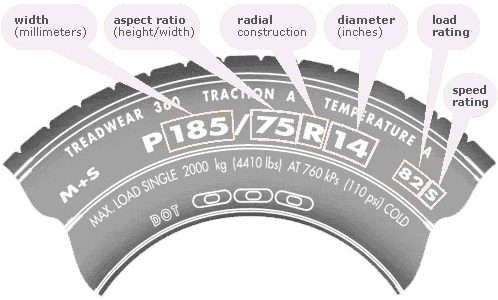
Tires differ in the way they are tensioned with cord threads: in diagonal ones they are allowed to cross, in radial ones they are not. The second option is more modern, characterized by increased rigidity and reliability. Designated with the word "Radial" or the letter "R" in the frame size. nine0003
Radial tires, due to the larger contact area, provide better traction.
After the standard size, there are load and speed indices, that is, the maximum allowable values for this type of rubber (in our case, “91V”).
In the presented version, the load on one wheel should not exceed 615 kg, and your speed should not exceed 240 km/h.
Choose the load index for a car based on half the maximum weight acting on the axle. Manufacturers recommend choosing tires with a margin of 15-20% of the calculated value. nine0003
Also calculate the speed index with a margin of about 15%.![]() Such an amendment is needed due to the fact that the speed of the car can increase on long descents or with a strong tailwind.
Such an amendment is needed due to the fact that the speed of the car can increase on long descents or with a strong tailwind.
Calculate the load index for SUV tires with a margin of 30%.
Tires are divided into winter, summer and all-weather. Manufacturers indicate belonging to a certain type using appropriate inscriptions or images (raindrops, sun rays, snowflakes, etc.). The presence of several images indicates the all-season product. nine0003
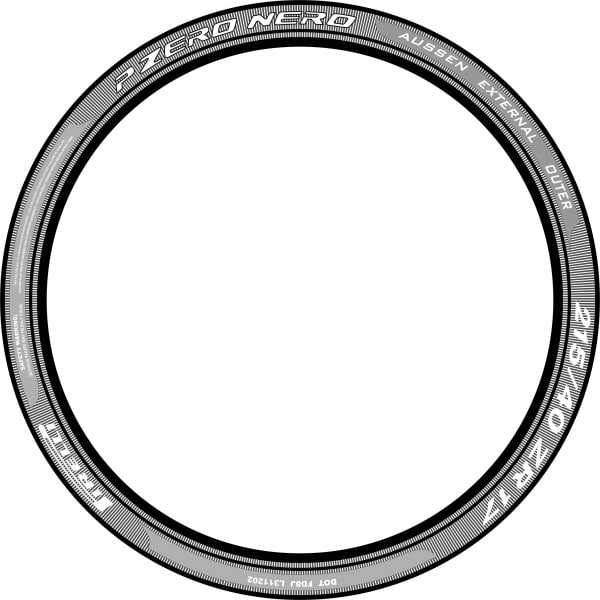
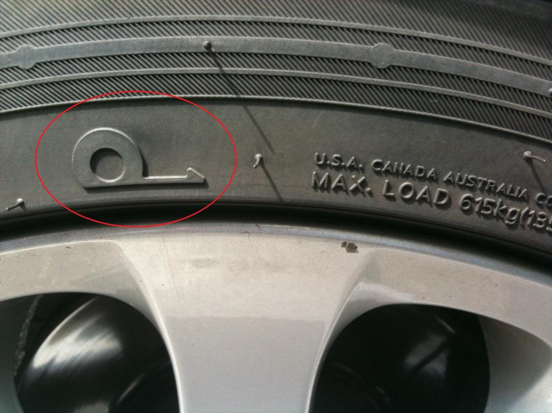 Can be supplemented or replaced by curly arrows. Present only on models with an asymmetric pattern.
Can be supplemented or replaced by curly arrows. Present only on models with an asymmetric pattern. 
They come in red, green, yellow or white and help you properly install the tires on the car.
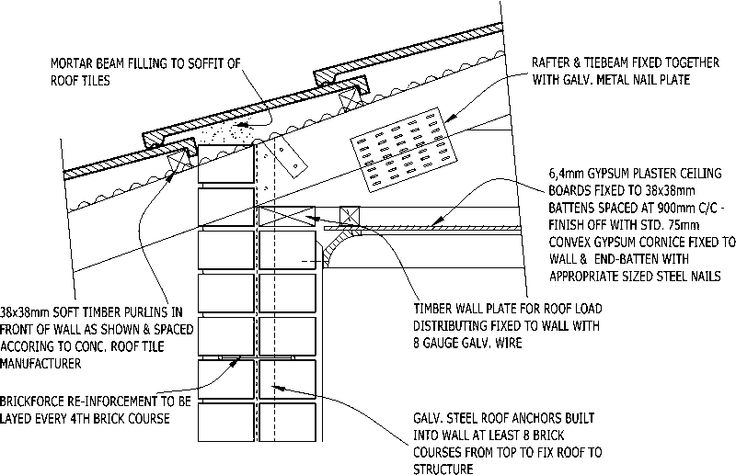
Colored stripes help warehouse workers recognize tire sizes and models stacked in stacks. nine0003
Most modern tires are tubeless. They are designated "TL" or "Tubeless". Outdated chamber models are labeled "TT" or "Tube Type". They differ in the way they are attached to the rim of the disc.
Tubeless tires with minor punctures are repaired without removing them from the wheel; also, with periodic pumping, drive to the nearest car service.
During long-term storage, tires lose their elasticity, and their driving performance deteriorates. nine0003
But on the models of some manufacturers, you can "read" the year of manufacture and refuse to buy old products.
A 3- or 4-digit code is indicated on the side in a rectangular frame with rounded corners. In the first case, the tire was produced before 2000, in the second - after. The first two digits of the number indicate the week, the last - the year.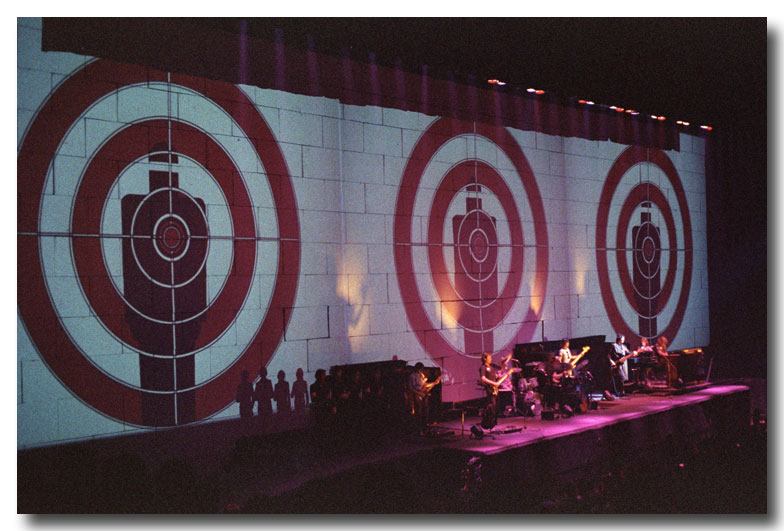 For example, code 308 means that tires were released in July 98 or 88, 1517 - in April 2017.
For example, code 308 means that tires were released in July 98 or 88, 1517 - in April 2017.
Read also: What pressure should be in the tires nine0003
In the United States, tires are produced with two different markings. The first differs from the European ones only in additional letters before the standard size:
The second one is more different from the standard size we are used to, besides it indicates the dimensions in inches. For example, a 33x12.50 R15 tire has an outer diameter of 33 inches, a profile width of 12.5 inches, and an inner diameter of 15 inches. The rest of the abbreviations are identical to the generally accepted ones. nine0003
For those who are used to deciding on their own the issue of competent selection of tires for their car, we have prepared useful information in this section:
design differences tires.
Types of tire marking and interpretation of its meanings.
Types of car tire designs.
Rubber and cord are, of course, the main ones in the production of car tires. Rubber made from natural and/or synthetic rubber is reinforced with cord fabric, which. In turn, it can be made of metal, textile or polymer threads. nine0003
The figure shows the classic structure of a car tire:
1 - tread
2 - shoulder
3 - carcass
4 - side (fender)
5 - belt additional insert in the shoulder area.
7 - side ring
8 - side part
According to the method of sealing the wheel, tires are divided into chamber and tubeless:
Tube tires consist of several elements: tires, chambers with a valve, with which air enters the tire and blocks its exit to the outside, and a rim tape that is put on the rim to prevent the tube from rubbing against the wheel and tire edge. nine0003
Tubeless tires differ from tube tires in the presence of a sealing rubber layer, which is applied to the first layer of the carcass.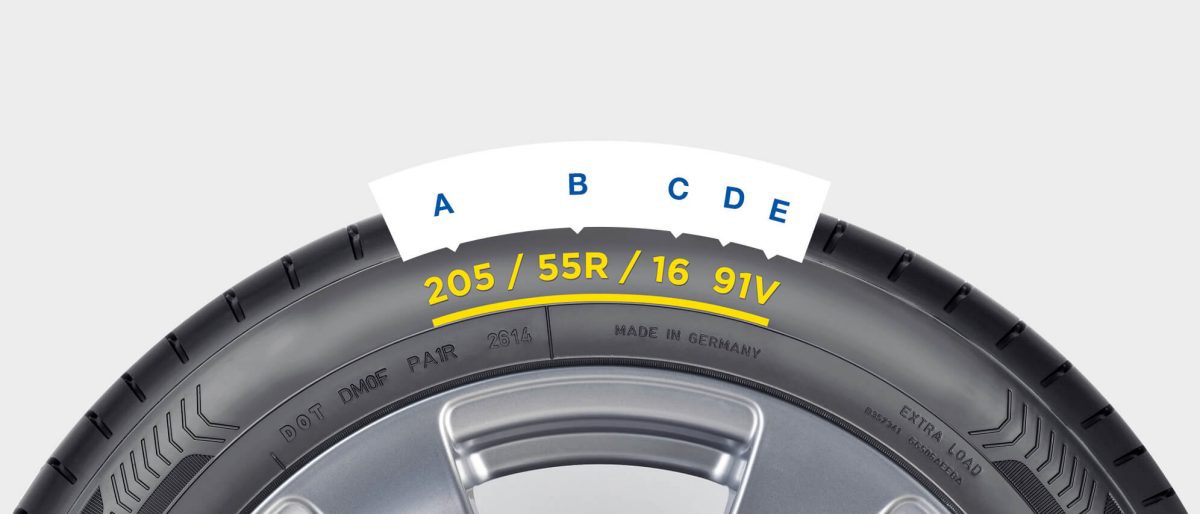 The camera is missing. The state of tightness in them is achieved due to the tight fit of the tire on the rim. The tire inflation valve is located in the wheel rim hole, which reduces tire weight, improves safety in case of a tire puncture, improves heat transfer, and also simplifies tire repair.
The camera is missing. The state of tightness in them is achieved due to the tight fit of the tire on the rim. The tire inflation valve is located in the wheel rim hole, which reduces tire weight, improves safety in case of a tire puncture, improves heat transfer, and also simplifies tire repair.
Most modern car tires are tubeless. nine0003
Depending on the location of the cord threads in relation to the radius of the wheel, tires are divided into radial and diagonal.
Bias tire carcass is a set of rubberized cord spacers, the edges of which are wrapped around wire ring rods (they are what allow the tire to “plant” on the rim). The carcass and breaker cords are crossed in adjacent layers (the number of adjacent layers is usually four) at an angle of 45° - 60°.
Today, this type of tire design is obsolete. As a rule, such tires are used on old cars, while in view of the still considerable fleet and demand for them, as well as the low cost of production, tires with a diagonal cord arrangement continue to be produced. It is worth noting the high maintainability of such tires, as well as resistance to destruction from impacts and cuts. nine0003
It is worth noting the high maintainability of such tires, as well as resistance to destruction from impacts and cuts. nine0003
The carcass of a radial tire is a structure with a parallel arrangement of the tire cords (along the radius from one bead to the other, and the breaker cords at an angle of more than 65°). In order for the tire to withstand heavy loads at high speeds and sharp turns, it has a steel cord belt in which two layers are wound alternately at a sharp angle. An additional nylon band is used on certain models to further stabilize the behavior of the tire. nine0003
Today, tires with a radial arrangement of cords are most in demand due to improved characteristics: structural rigidity, stability of the tire contact patch with the roadway, reduced rolling resistance and, as a result, lower fuel consumption. At the same time, tires with a radial design have a lower weight and carcass thickness, heat up less, give off heat faster, which can significantly extend their service life.
By purpose, the tires are divided into the following groups:
tires for passenger cars;
tires for light trucks and SUVs.
tires for trucks;
tires for construction, agriculture and special purpose of technology.
tires for motorcycles and mopeds.
In the production of passenger and light truck tires, a cord made of textile or polymer threads is used.
Metal cord used in the production of truck tires. nine0003
TIRE MARKING.
On November 1, 2012, a law on mandatory tire labeling was passed in Europe. Tires for passenger cars, commercial vehicles and trucks produced in the European Union have a standardized marking. It should be taken into account that the law does not provide for mandatory marking of retreaded tires, off-road tires, tires for cars registered before October 1, 1990, as well as for spare tires and stowaways, tires with a speed index below 80 km / h, studded tires, tires for racing cars. nine0003
In summary, according to the European label, tires must be judged on three main criteria: fuel efficiency, wet grip, and external rolling noise.
Fuel efficiency (rolling resistance)
The fuel efficiency of is an important criterion to consider when choosing a tire. The argument here is quite weighty - about twenty percent of a car's fuel consumption depends on the tires used! The higher the rolling resistance rating of a tire, the higher your vehicle's fuel consumption will be. The level of tire rolling resistance is indicated in Latin letters in the range from A to G. Accordingly, the mark A on the tire indicates low rolling resistance, and therefore the lowest fuel consumption. The G mark indicates the highest level of tire rolling resistance, of course, fuel consumption will be maximum. nine0003
What determines the rolling resistance index? A number of determining factors come into play here:
the design of the tire itself.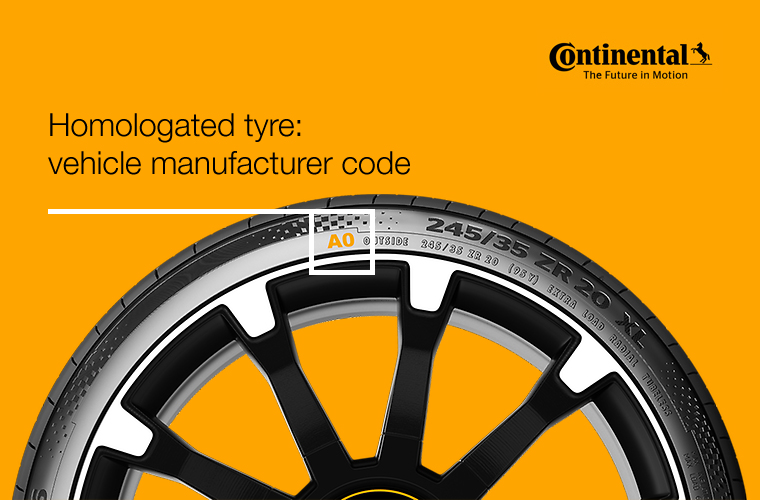
tire pressure level.
tire temperature and load.
vehicle speed.
the condition of the suspension of the car and the roadway.
Wet grip .
This criterion evaluates the stopping distance of a vehicle on a wet road surface. Tires are marked with Latin letters in the range from A to F. The difference in the braking distance of a car equipped with category A tires and category F tires will be about eighteen meters (according to measurements made on a car moving at a speed of 80 km / h before braking). nine0003
External tire rolling noise.
This indicator indicates the noise level that occurs when a tire is rolling and is measured in decibels. The quietest tires do not exceed 60 dB. Tires over 74 dB will be very noisy.
METRIC AND TIRE LABELING.
Winter - tires designed for operation in winter weather conditions.
Aqua, Rain or Water (may be designated with an umbrella icon) - Tires designed for use in rain or wet conditions. Minimize the effect of aquaplaning, especially at high speeds. nine0003
Minimize the effect of aquaplaning, especially at high speeds. nine0003
M + S (Mud + Snow, which means mud + snow) - off-road tires for driving in mud or snow.
M/T (Mud Terrain) - mud terrains.
A/T (All Terrain) - tires for any type of terrain.
AS (All Season), Any Season, R+W (Road + Winter) - designations for all-season tires.
Rotation - Tires with directional tread patterns have an arrow on the sidewall of the tire indicating the desired direction of tire rotation.
Outside and Inside (or Side Facing Out and Side Facing Inwards) are asymmetric tires, which must be installed strictly following the tire-on-rim rule. The inscription Outside (outer side) should be on the outside of the car, and Inside (inner side) - on the inside. nine0003
Left or Right - means that the tires of this model are left and right. When installing them, you must strictly follow the rule of installing a tire on a car, the left ones only on the left, and the right ones, respectively, only on the right.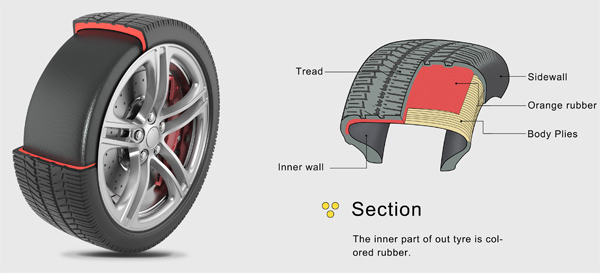
Steel Radial - a radial tire with a steel cord.
Tubeless (TL) - tubeless tire.
Tube Type (TT) - the tire is installed with the camera.
Treadwear 380 - wear coefficient, determined in relation to the "base tire", for which it is equal to 100. The wear index is a theoretical value and cannot be directly related to the practical life of the tire, which is significantly influenced by road conditions, driving style, following pressure recommendations, adjusting vehicle camber angles and wheel rotation. The wear indicator is presented as a number from 60 to 620 with an interval of 20 units. The higher its value, the longer the protector withstands when tested according to the established method. nine0003
Traction A - friction coefficient, has the values A, B, C. Coefficient A has the highest friction value in its class.
Max Load - the maximum load and further there are values in kilograms and pounds.
PR (Ply Rating) - the strength (load-bearing capacity) of the carcass is conditionally estimated by the so-called ply rate.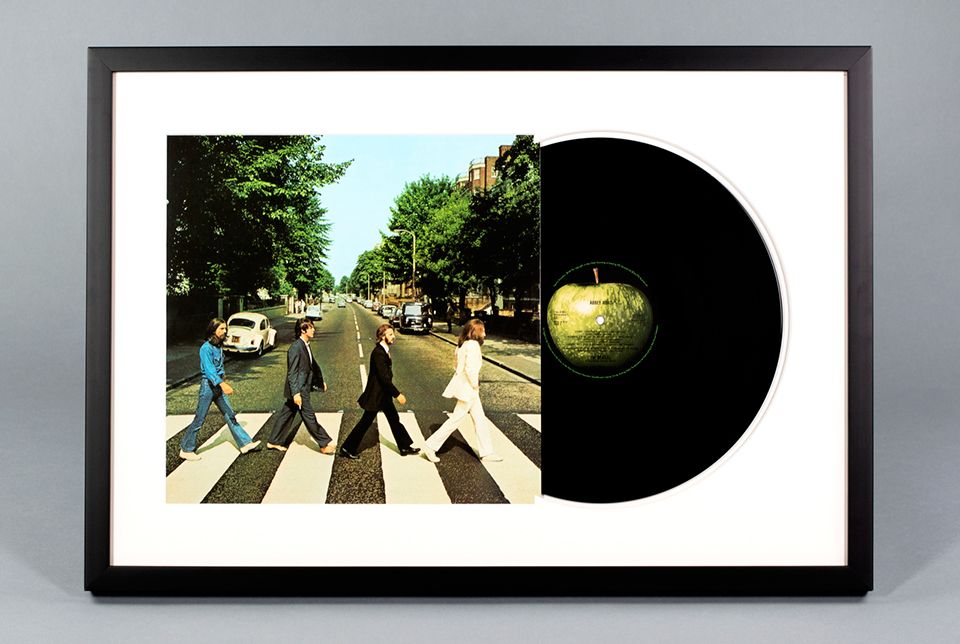 The stronger the carcass, the more air pressure the tire can withstand, and therefore has a greater load capacity. For passenger cars, tires with a ply rating of 4PR and sometimes 6PR are used, and in this case the latter have the inscription "Reinforced", that is, "reinforced" (tires with increased load capacity). nine0003
The stronger the carcass, the more air pressure the tire can withstand, and therefore has a greater load capacity. For passenger cars, tires with a ply rating of 4PR and sometimes 6PR are used, and in this case the latter have the inscription "Reinforced", that is, "reinforced" (tires with increased load capacity). nine0003
Extra Load (XL) - increased load index.
Reinforced (Reinf or RF) - increased load index. On light trucks and minibuses, tires with 6PR and 8PR are most commonly used. The increased ply (that is, strength) of the tire may be indicated by the letter “C” (commercial), which is placed after the designation of the landing diameter (for example, 185R14C).
TWI - the mark is located on the sidewall of the tire and shows the location of the remaining tread height marks in the main grooves. For the countries of the European Union and the Russian Federation, the remaining tread depth of a worn passenger tire must be at least 1.6 mm. nine0003
ZP (Zéro Pression) - zero pressure, Michelin's commercial designation for tires with reinforced sidewalls.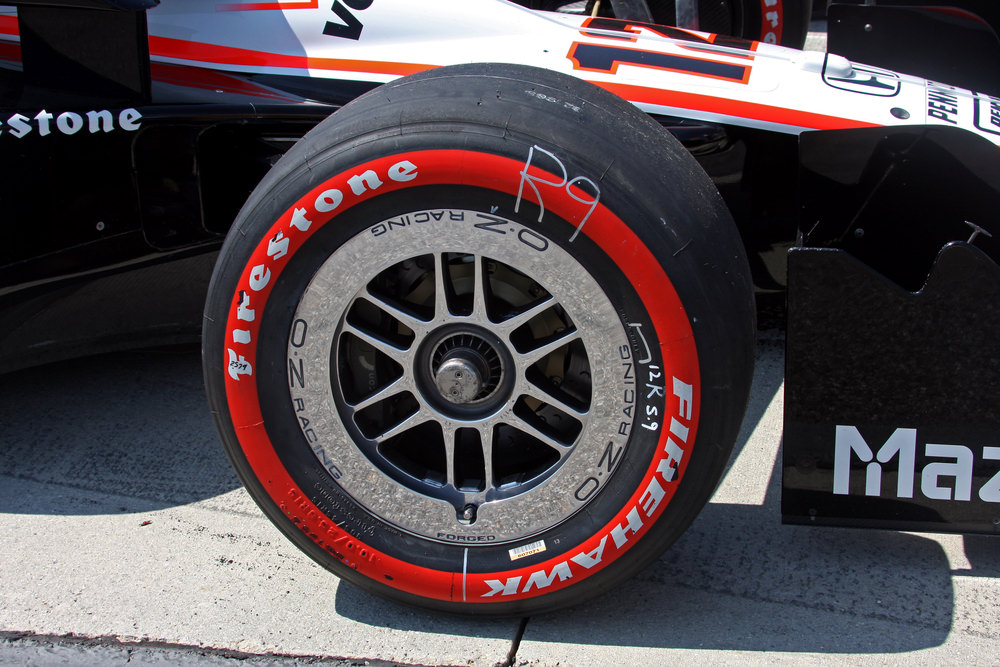 ZP: Ability to continue driving in the event of a puncture up to 80 km at speeds up to 80 km/h. ZP SR: Ability to continue driving in the event of a puncture up to 30 km at speeds up to 80 km/h.
ZP: Ability to continue driving in the event of a puncture up to 80 km at speeds up to 80 km/h. ZP SR: Ability to continue driving in the event of a puncture up to 30 km at speeds up to 80 km/h.
SST(Self Supporting Tires) - self-supporting tire. Such tires can carry the load and continue to move after a puncture.
Dunlop MFS (Maximum Flange Shield) - Maximum bead protection system protects expensive wheels from curbs and pavement damage - a rubber profile around the tire circumference, located on the bottom of the wall above the rim flange, forms a buffer zone. nine0003
Studless - the tire cannot be fitted with studs.
Studdable - Tire can be fitted with studs. In addition, the tires are marked with quality standards
E (circled) - European quality standard.
DOT - American Quality Standard.
SPEED INDEX.
As a result of tests carried out by the manufacturer on a specially equipped stand, each tire is assigned a certain speed category.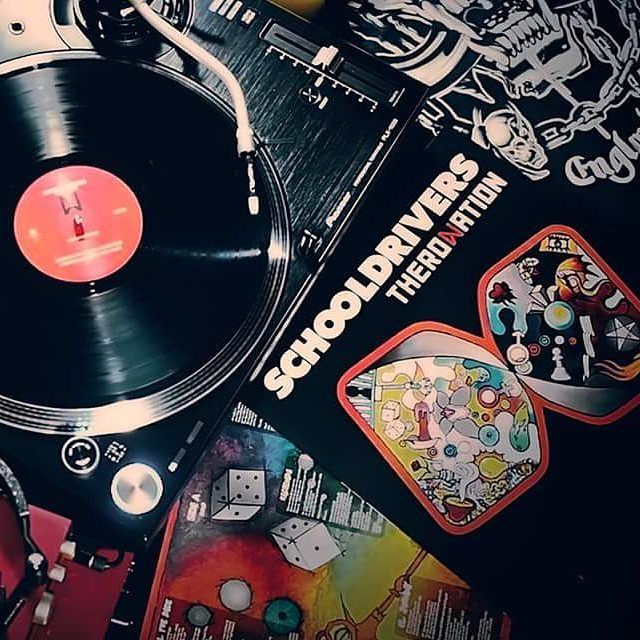 The marking on the tire indicates the maximum speed that the tire of this model can withstand. When choosing tires, this factor should be taken into account, since your car should drive at a speed of 10-15% less than the maximum allowable. nine0003
The marking on the tire indicates the maximum speed that the tire of this model can withstand. When choosing tires, this factor should be taken into account, since your car should drive at a speed of 10-15% less than the maximum allowable. nine0003
Marking "ZR" - indicates that the tires are designed for operation at speeds exceeding 240 km/h.
The “V” marking on a tire, together with the load index (example: 91V), means that the tires are designed for use at speeds up to 240 km/h, while the load index is indicated for a speed of 210 km/h. The load must be reduced by three percent in proportion to the increase in speed by 10 km/h.
The "W" marking on the tires, together with the load index (example: 100W), indicates that the tire is designed for use at speeds up to 270 km/h, while the load index is indicated for a speed of 240 km/h. The load must be reduced by five percent in proportion to the increase in speed by 10 km/h. nine0003
The "Y" marking on a tire with a load rating (example: 95Y) indicates that the tires are designed for speeds up to 300 km/h, while the load rating is for 270 km/h.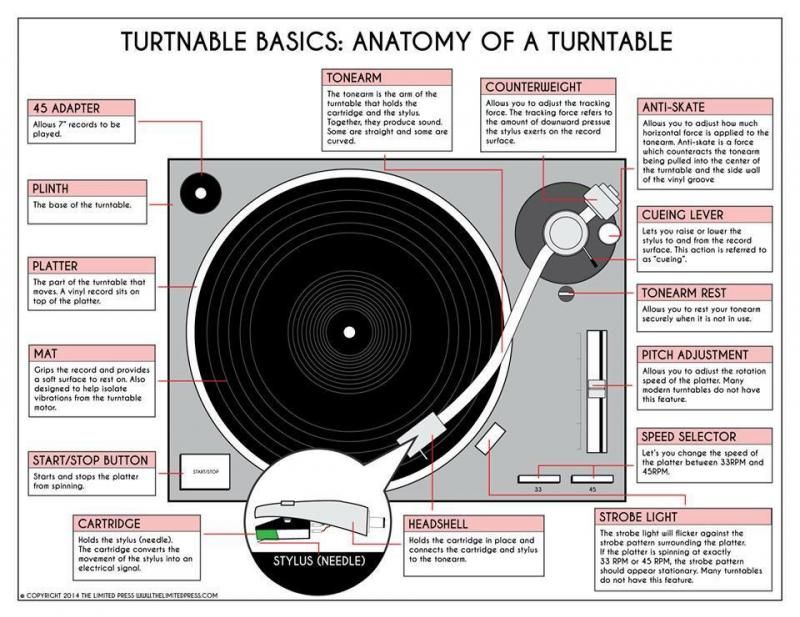 The load must be reduced by five percent in proportion to the increase in speed by 10 km/h.
The load must be reduced by five percent in proportion to the increase in speed by 10 km/h.
LOAD INDEX.
| Load index | Permissible load, kg | Load index | Permissible load, kg |
|---|---|---|---|
| 0 | 45 | 100 | 800 |
| 1 | 46.2 | 101 | 825 | nine0390
| 2 | 47.5 | 102 | 850 |
| 3 | 48.7 | 103 | 875 |
| 4 | 50 | 104 | nine0392 |
| 5 | 51.5 | 105 | 925 |
| 6 | 53 | 106 | 950 |
| 7 | 54. | nine0392 975 | |
| 8 | 56 | 108 | 1000 |
| 9 | 58 | 109 | 1030 |
| 10 | nine0392 110 | 1060 | |
| 11 | 61.5 | 111 | 1090 |
| 12 | 63 | 112 | 1120 |
| 13 | 65 | 113 | 1150 |
| 14 | 67 | 114 | 1180 |
| 15 | 69 | 115 | nine0392 |
| 16 | 71 | 116 | 1250 |
| 17 | 73 | 117 | 1285 |
| 18 | 75 9039five | 118 | 1320 |
| 19 | 77. | 119 | 1360 |
| 20 | 80 | 120 | 1400 |
| 21 nine0395 | 82.5 | 121 | 1450 |
| 22 | 85 | 122 | 1500 |
| 23 | 87.5 | 123 | 1550 nine0395 |
| 24 | 90 | 124 | 1600 |
| 25 | 92.5 | 125 | 1650 |
| 26 | 95 | 126 nine0395 | 1700 |
| 27 | 97 | 127 | 1750 |
| 28 | 100 | 128 | 1800 |
| 29 | 103 nine0395 | 129 | 1850 |
| 30 | 106 | 130 | 1900 |
| 31 | 109 | 131 | 1950 |
| 32 | 112 | 132 | 2000 |
| 33 | 115 | 133 | 2060 |
| 34 | 118 | 134 | 2120 nine0395 |
| 35 | 121 | 135 | 2180 |
| 36 | 125 | 136 | 2240 |
| 37 | 128 | 137 nine0395 | 2300 |
| 38 | 132 | 138 | 2360 |
| 39 | 136 | 139 | 2430 |
| 40 | 140 | 140 | 2500 |
| 41 | 145 | 141 | 2575 |
| 42 | 150 | 142 | 2650 |
| nine0002 43 | 155 | 143 | 2725 |
| 44 | 160 | 144 | 2800 |
| 45 | 165 | 145 | 2900 |
| 46 | 170 | 146 | 3000 |
| 47 | 175 | 147 | 3075 |
| 48 | 180 | nine0002 148 | 3150 |
| 49 | 185 | 149 | 3250 |
| 50 | 190 | 150 | 3350 |
| 51 | nine0392 151 | 3450 | |
| 52 | 200 | 152 | 3550 |
| 53 | 206 | 153 | 3650 |
| 54 | 212 | 154 | 3750 |
| 55 | 218 | 155 | 3875 |
| 56 | 224 | 156 9039five | 4000 |
| 57 | 230 | 157 | 4125 |
| 58 | 236 | 158 | 4250 |
| 59 | 243 nine0395 | 159 | 4375 |
| 60 | 250 | 160 | 4500 |
| 61 | 257 | 161 | 4625 |
| 62 | 265 | 162 | 4750 |
| 63 | 272 | 163 | 4875 |
| 64 | 280 | 164 | 5000 nine0395 |
| 65 | 290 | 165 | 5150 |
| 66 | 300 | 166 | 5300 |
| 67 | 307 | 167 nine0395 | 5450 |
| 68 | 315 | 168 | 5600 |
| 69 | 325 | 169 | 5800 |
| 70 | 335 | 170 | 6000 |
| 71 | 345 | 171 | 6150 |
| 72 | 355 | 172 | 6300 |
| nine0002 73 | 365 | 173 | 6500 |
| 74 | 375 | 174 | 6700 |
| 75 | 387 | 175 | 6900 |
| 76 | 400 | 176 | 7100 |
| 77 | 412 | 177 | 7300 |
| 78 | 425 | nine0002 178 | 7500 |
| 79 | 437 | 179 | 7750 |
| 80 | 450 | 180 | 8000 |
| 81 | nine0392 181 | 8250 | |
| 82 | 475 | 182 | 8500 |
| 83 | 487 | 183 | 8750 |
| 84 | 500 | 184 | 9000 |
| 85 | 515 | 185 | 9250 |
| 86 | 530 | 186 9039five | 9500 |
| 87 | 545 | 187 | 9750 |
| 88 | 560 | 188 | 10000 |
| 89 | 580 nine0395 | 189 | 10300 |
| 90 | 600 | 190 | 10600 |
| 91 | 615 | 191 | 10900 |
| 92 | 630 | 192 | 11200 |
| 93 | 650 | 193 | 11500 |
| 94 | 670 | 194 | 11800 |
| 95 | 690 | 195 | 12150 |
| 96 | 710 | 196 | 12500 |
| 97 | 730 | nine0002 197 | 12850 |
| 98 | 750 | 198 | 13200 |
| 99 | 775 | 199 | 13600 |
More information. nine0208
nine0208
Tires must be marked as follows:
MAX PRESSURE - the maximum allowable tire pressure. For each type of tire, there are air pressure standards that must be observed. Violation of these requirements can lead to both increased or uneven wear of the tread, and a violation of the integrity of the tire, which is dangerous especially at high speeds. By the way, before adjusting the wheel alignment of the car - do not forget to bring the tire pressure back to normal! nine0003
What are the colored dots or circles on the tire for?
The red dot indicates the hardest point on the tire. If your rims are marked with a white dot, it is recommended to combine these two dots during tire fitting.
The yellow dot indicates the lightest spot on the tyre.
To a greater extent, both markings are needed for tire service employees, because this information will tell a competent specialist how to reduce the mass and number of balancing weights.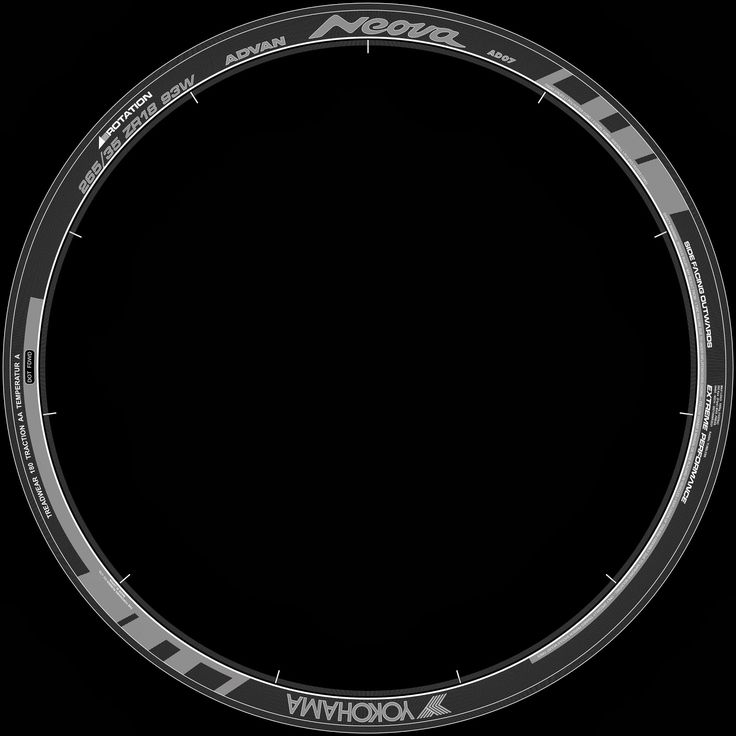 nine0003
nine0003
Tire construction materials - Tires may also bear the names of the materials that make up the tire carcass and breaker.
Here is an example of tire marking and its interpretation:
Metric marking system.
Example: TIRE LT205/55R16 91V
for trailers/semi-trailers and vans (these tires are not used for cars/trucks/SUVs; T - temporary use tire (for spare wheel)
205 - profile width in mm
55 - ratio of tire profile height to tire width.
R - the type of tire carcass has a radial structure (the absence of a default marking indicates that the tire is a diagonal type).
D (or not specified) - diagonal tire carcass type.
B - Bias Belt. The structure of the tire carcass is diagonal with the use of a breaker, characteristic of radial tires.
16 — tire diameter in inches (corresponds to the diameter of the rim). nine0003
91 - maximum load index. Marking is also used indicating the load in kg or pounds (max load).
V - tire speed index (see the value in the table).
The following marking options are also possible:
The location of the speed index designation is allowed in different places: 225/50SR16, 225/50SR16 89S, 225/50R16 89S
Marking with the letter C after the diameter indicates that the tire is intended for commercial vehicles , as well as off-road trucks and pickups (example: 195/70R15C 104/102R).
If the manufacturer, after indicating the tire size, placed the letters XL, RF, SL, LL (example: P235 / 75R-15 XL, P285 / 35R-19 LL), this means that the tire has XL, RF - increased, SL - standard, LL - reduced bearing capacity. American P-marking XL corresponds to the maximum allowable pressure of 41 psi (280 kPa), SL and LL - 35 psi (240 kPa), in the European marking XL / RF corresponds to 42 psi (290 kPa), SL - 36 psi (250 kPa), LL is missing. The absence of this designation corresponds to the SL variant. nine0003
The presence of the letters FR (example: 215/45 R17 87V FR) after the specified size means that the tire has a protective portico on the sidewall that protects the rim and the rubber itself from damage.